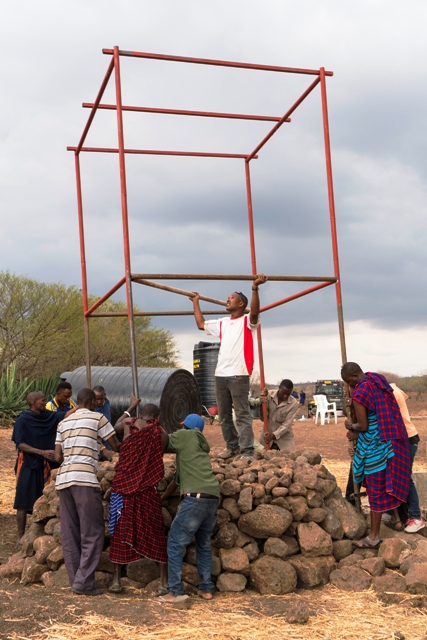The International Collaborative introduced water sanitation systems based on tried-and-true chlorination technology, adapted to the local conditions.
We take on a huge responsibility when we tell families that the water is safe. After all, we are telling a mother she doesn’t need to do anything to the water before her children drink it. In the past she may have boiled some, which had helped.
Repeated testing
The ponds where we have introduced chlorination have well organized water-user collectives. The manager for each adds aluminum sulfate to the first large tank of the system to work overnight. This gets the silt and organic matter to settle by morning.
That morning, the manager then adds the calcium hypochlorite to the clear water in the second tank and it is ready for the women to collect the same day. We’ve tested this regularly over the first year of our four installed systems. This reveals the accurate amounts of these chemicals needed for producing safe and clear water.
Kisioki and I set out on my first day back in Tanzania to visit the four water systems. We inspected each of the small tanks that hold the concentrated chemical solutions used by the local system manager. We also collected tank water samples for testing with the IDEXX colisure method.
At one installation we replaced one of the chemical holding tanks to make treatment more convenient for the manager. And we reviewed the dosages with the managers of all four systems. Read more here.
Great results
All is well, and we now know the technology is practical. We have also confirmed that this approach to ridding the people of water-borne disease is a real success! The samples are very good, and all the managers are well equipped to maintain the water quality.
With this good news, scaling up is now on the agenda
With clean water so essential for health, we believe that an investment in this kind of “preventative medicine” would be a great use of Tanzanian government health funds. Our goal is to work with the District government and encourage them to work with us to expand the use of this effective and inexpensive technology for health.And of course, we still need you and donors like you to help support the building of more systems to bring clean water to more people in need. But in the meantime, monitoring bacteria never stops.

